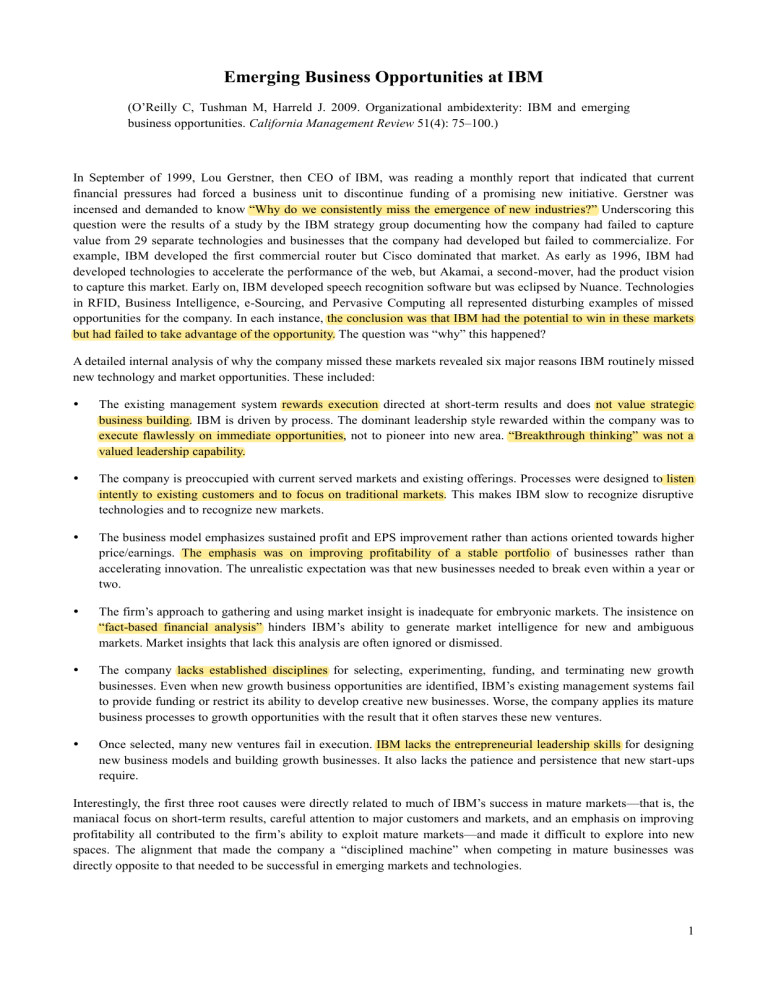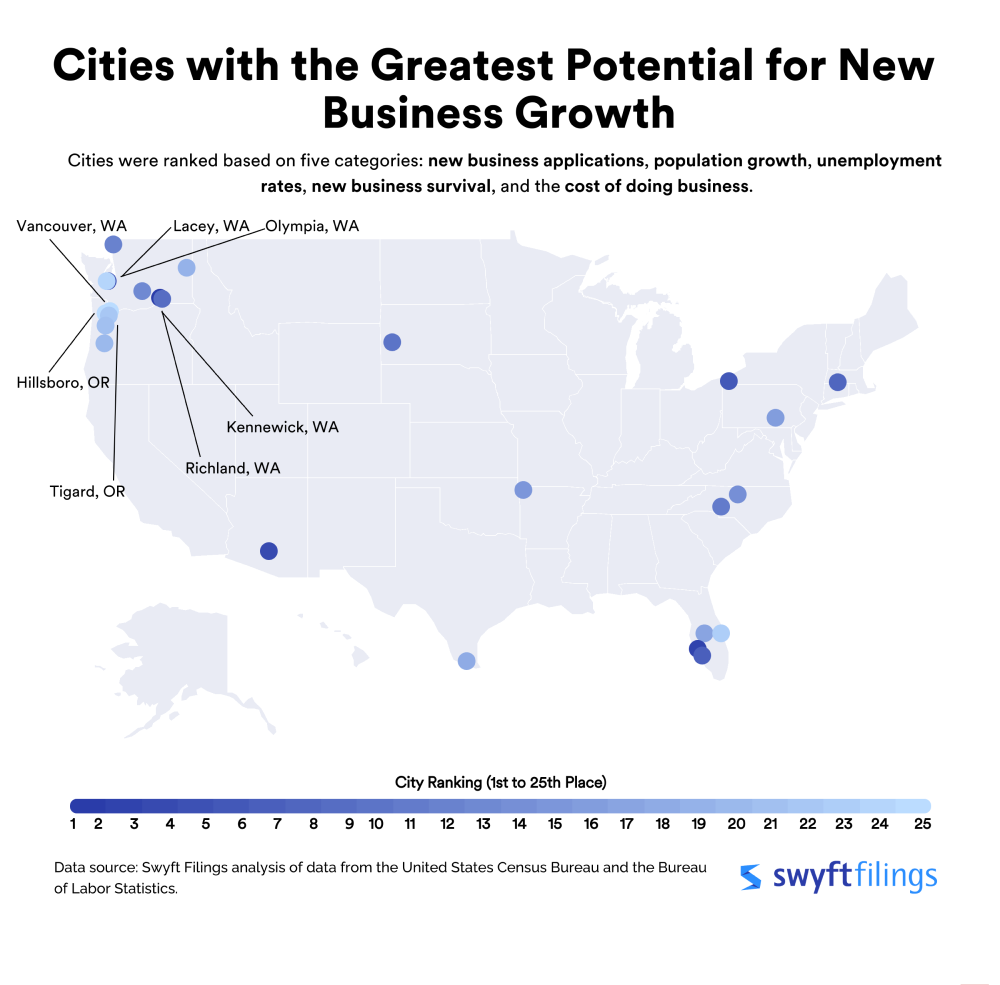Identifying Emerging Business Opportunities: A Nationwide Map

Table of Contents
Analyzing Macroeconomic Trends for Business Opportunities
Identifying emerging business opportunities often starts with understanding the broader economic landscape. Analyzing macroeconomic trends provides crucial insights into national economic shifts and their impact on various sectors. By monitoring key economic indicators, you can anticipate market changes and identify sectors poised for growth.
-
Examine GDP growth rates and regional variations: A rising GDP generally indicates a healthy economy, but regional variations can reveal pockets of stronger growth, presenting prime locations for investment. The Bureau of Economic Analysis (BEA) is an invaluable resource for this data.
-
Analyze employment data to identify skill shortages and emerging sectors: Understanding labor market dynamics helps identify industries experiencing skill shortages. This points towards potential for new businesses providing specialized training or services catering to these demands. The U.S. Bureau of Labor Statistics (BLS) offers comprehensive employment data.
-
Study government spending and infrastructure projects for related opportunities: Large-scale government initiatives often stimulate economic activity in related sectors. Monitoring infrastructure projects (roads, bridges, energy grids) can reveal opportunities in construction, engineering, and related support services.
-
Research consumer spending patterns and emerging trends: Analyzing consumer behavior provides valuable insights into shifting demands and preferences. This data helps identify emerging needs and desires, paving the way for innovative product or service offerings. Market research firms and consumer trend reports provide rich data sources.
-
Utilize resources like the Bureau of Economic Analysis and the U.S. Census Bureau: These government agencies provide comprehensive data on various macroeconomic indicators, including GDP, employment, and population demographics, which are essential for informed decision-making.
Regional Variations in Business Opportunities: A Geographic Analysis
The United States boasts a diverse economic landscape, with regional variations creating unique business opportunities. A geographic analysis is crucial for identifying these localized advantages.
-
Identify areas with high population growth and young demographics: Areas with a growing population, particularly young adults, often present promising markets for goods and services catering to their needs and preferences.
-
Analyze the strengths and weaknesses of different regions (e.g., agricultural, technological, tourism): Understanding regional economic specializations allows you to focus on areas where your skills and resources align with existing strengths.
-
Research local regulations and incentives that support business development: Many regions offer tax breaks, grants, and other incentives to attract businesses. Understanding these incentives can significantly impact the profitability and viability of your venture.
-
Consider the infrastructure and transportation networks in each region: Access to reliable infrastructure and transportation is vital for efficient operations. Regions with well-developed infrastructure generally offer a more conducive business environment.
-
Use tools like GIS mapping to visualize regional opportunities: Geographic Information System (GIS) software can help you visualize data and identify areas with a high concentration of favorable factors for your specific business idea.
Leveraging Technological Advancements for New Business Ideas
Technological innovation is a powerful driver of new markets and business models. Staying abreast of emerging technologies can open doors to groundbreaking opportunities.
-
Explore the potential of Artificial Intelligence (AI), Machine Learning (ML), and Big Data analytics: These technologies offer enormous potential for streamlining operations, improving decision-making, and creating innovative products and services.
-
Investigate the growth of e-commerce and online services: The digital economy continues to expand rapidly, presenting opportunities for businesses offering online products, services, and digital solutions.
-
Analyze the impact of automation and robotics on various industries: Automation is transforming numerous industries, creating opportunities for businesses specializing in automation technologies, robotics integration, and related services.
-
Identify opportunities in the development and implementation of new technologies: Companies developing and implementing new technologies often enjoy a first-mover advantage in emerging markets.
-
Stay updated on emerging technological trends through industry publications and conferences: Continuous learning and engagement with the tech community are critical for identifying promising technological advancements.
Identifying Underserved Markets and Niche Opportunities
Focusing on underserved markets or niche opportunities can significantly increase your chances of success. This involves identifying gaps in the market and catering to specific consumer needs.
-
Research demographic groups with unmet needs: Many consumer groups have specific needs that aren't adequately addressed by existing businesses. Identifying these needs provides an opportunity to create targeted solutions.
-
Identify geographic areas lacking specific services or products: Even in densely populated areas, certain services or products may be unavailable, creating opportunities for businesses to fill these gaps.
-
Analyze consumer preferences and trends through market research: Conducting thorough market research helps you understand consumer preferences and needs, ensuring your product or service resonates with your target audience.
-
Develop innovative solutions to address specific market gaps: Offering unique, innovative solutions to underserved markets can lead to significant growth and profitability.
-
Use social media and online forums to understand consumer feedback and unmet needs: Social media platforms provide valuable insights into consumer opinions and preferences, enabling you to identify unmet needs and potential market gaps.
Conclusion
Successfully identifying emerging business opportunities requires a multifaceted approach. By systematically analyzing macroeconomic trends, regional variations, technological advancements, and underserved markets, you can significantly increase your chances of finding the next big thing. Start exploring the nationwide map of opportunities today, and begin your journey towards building a successful and thriving business. Don't miss out on the chance to identify emerging business opportunities—start your search now!

Featured Posts
-
 Are You In A Silent Divorce Key Indicators And What To Do
Apr 28, 2025
Are You In A Silent Divorce Key Indicators And What To Do
Apr 28, 2025 -
 Double Trouble In Hollywood Wga And Sag Aftra Strike Brings Industry To Standstill
Apr 28, 2025
Double Trouble In Hollywood Wga And Sag Aftra Strike Brings Industry To Standstill
Apr 28, 2025 -
 Mapping The Rise Of New Business Hubs Across The Nation
Apr 28, 2025
Mapping The Rise Of New Business Hubs Across The Nation
Apr 28, 2025 -
 Negotiations Stall Starbucks Union Rejects Companys Wage Offer
Apr 28, 2025
Negotiations Stall Starbucks Union Rejects Companys Wage Offer
Apr 28, 2025 -
 Ftcs Appeal Against Microsoft Activision Merger Approval
Apr 28, 2025
Ftcs Appeal Against Microsoft Activision Merger Approval
Apr 28, 2025
